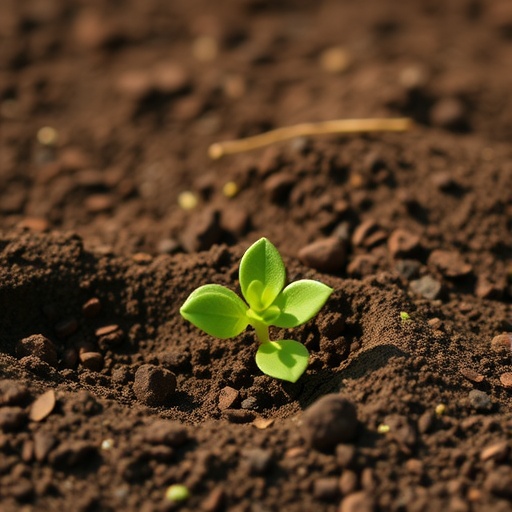Acid soils represent a significant challenge for agricultural productivity in sub-Saharan Africa. These soils, characterized by low pH levels, limit the availability of essential nutrients and impede the growth of various crops. It is estimated that around 32.7 million hectares of cropland in this region are afflicted by soil acidity, which translates to approximately 23% of the total cropland available for farming. The prevalence of these acid soils poses considerable obstacles for farmers, particularly in terms of yield losses and subsequent economic impacts. Understanding the implications of soil acidity on agricultural output is crucial for developing effective remediation strategies.
The economic burden associated with these acid soils is staggering, with an estimated loss of approximately US$6.0 billion. This figure accounts for 6% of the total current production value attributed to agricultural activities in sub-Saharan Africa. Such substantial losses underscore the need for interventions aimed at alleviating soil acidity. Among the potential solutions, agricultural lime has emerged as a recommended approach to mitigate the detrimental effects of soil acidity. However, the availability and accessibility of lime in the region remain limited, raising questions about the feasibility and profitability of applying this remedy.
Recent research examining lime requirement models and the yield responses of crops under varying acidity conditions offers insights into the profitability of soil remediation through liming. By employing plateau-linear decay functions, researchers have begun to unlock the potential economic benefits of liming acidic soils. The research reveals that there exists a threshold at which the application of lime can yield significant returns. This is particularly relevant given that about 75% of the burden brought about by acid soils could be profitably alleviated through strategic investments in lime application.
To further contextualize the findings, it is important to note that under current agricultural practices, liming would generate profitability in the year of application on approximately 6.2 million hectares of farmland. The average profitability on these lands would be around US$278 per hectare, making the case for immediate action even more compelling. However, it is also pertinent to consider the long-term effects of lime application, which could extend profitability to an additional 8.8 million hectares over time. This differentiation between immediate and long-term benefits highlights the critical need for farmers and policymakers to understand the value of investing in soil remediation.
The challenge of implementing liming strategies is compounded by various socio-economic factors. The disparity in the relative prices of lime and crops hampers its accessibility for many smallholder farmers. Furthermore, the current infrastructure for distributing agricultural lime in sub-Saharan Africa is often underdeveloped, resulting in limited availability in rural areas. To increase the adoption of lime application, it will be crucial to address these infrastructure and pricing barriers, allowing for improved access and affordability of lime.
The potential for intensifying crop production also plays a significant role in the profitability of liming. By optimizing agricultural practices and increasing crop yield potential through lime application, farmers can enhance their economic output. This potential for increased productivity could be further bolstered by the integration of sustainable farming practices, which align with modern agricultural objectives of minimizing environmental impact while maximizing output.
As agricultural research continues to evolve, more nuanced approaches to soil management are emerging. These approaches will benefit from interdisciplinary collaboration between agronomists, economists, and policymakers. Through such partnerships, it becomes possible to craft targeted investments that not only address the immediate needs of soil remediation but also contribute to broader agricultural sustainability goals. The need for strategic interventions is evident, as delayed action could exacerbate soil degradation and threaten food security in the region.
In conclusion, addressing the pervasive issue of soil acidity in sub-Saharan Africa is vital for enhancing agricultural productivity and economic stability. The evidence of profitable liming practices, coupled with the acknowledgment of existing barriers to implementation, presents a clear call to action. By prioritizing investments in soil remediation, stakeholders can contribute to lasting improvements in crop yields and the livelihoods of farmers across the region. This collective effort is more than just an agricultural investment; it is a critical step toward building a resilient food system that meets the needs of the future.
As we reflect on the future of agriculture in sub-Saharan Africa, it is clear that technology and research will continue to play essential roles in reshaping perceptions of soil management and productivity. Building awareness and knowledge around the implications of soil acidity, alongside a commitment to innovative agricultural practices, will determine how effectively we can overcome the challenges posed by acid soils. Encouraging farmers to embrace liming as a means of soil remediation will require ongoing education and support, but the rewards could be vast, paving the way to a more productive and sustainable agricultural landscape.
Moreover, continuing research into the long-term benefits of liming and its interaction with different crops will enhance the understanding of soil health and sustainability. By refining models that predict crop responses to various soil management practices, farmers will be equipped with the critical information needed to make informed decisions. In turn, this empowerment will foster a new wave of agricultural practices that prioritize soil health, ultimately leading to higher yields and improved food security in sub-Saharan Africa.
As we move forward, it is essential that we maintain a holistic view of soil management, recognizing that soil is a living ecosystem that requires care and attention. A concerted effort involving all stakeholders is necessary to implement viable strategies that benefit the entire agricultural sector. In doing so, the agricultural narrative in sub-Saharan Africa will shift, transforming the landscape into one that is not just challenged by acidity but rather enriched by informed practices and sustainable solutions.
This multi-faceted approach to addressing soil acidity will, in turn, redefine agricultural excellence in the region, where the combined efforts of research, policy, and community engagement will pave the path for a brighter agricultural future. As we embark on this journey, the collective vision for nurturing and enhancing the soils of sub-Saharan Africa will be paramount in shaping not only the current generation of farmers but also the sustainability of agriculture for decades to come.
Subject of Research: Soil acidity remediation in sub-Saharan Africa
Article Title: Soil acidity remediation in sub-Saharan Africa requires targeted investments
Article References:
Silva, J.V., Aramburu-Merlos, F., Baudron, F. et al. Soil acidity remediation in sub-Saharan Africa requires targeted investments.
Nat Food 6, 799–808 (2025). https://doi.org/10.1038/s43016-025-01194-z
Image Credits: AI Generated
DOI: https://doi.org/10.1038/s43016-025-01194-z
Keywords: Soil acidity, Agricultural productivity, Liming, Sub-Saharan Africa, Sustainable agriculture, Economic impact.
Tags: access to agricultural inputs in Africaagricultural lime as a solutionagricultural productivity in sub-Saharan Africachallenges of acid soils in farmingcrop growth limitations due to soil pHeconomic impact of soil acidityinterventions for soil acidity issuesnutrient availability in acidic soilssoil acidity remediation strategiessoil health and agricultural developmentSustainable agriculture practices in Sub-Saharan Africayield loss from acid soils





